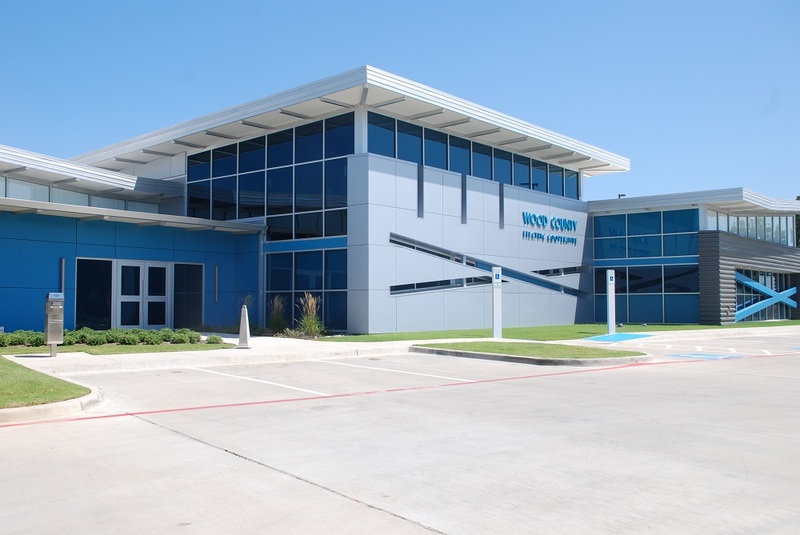Wood County Electric Cooperative

Just a minute’s drive from the 1925 county courthouse in Quitman, Texas, one may find the thoroughly modern, electric blue headquarters of the Wood County Electric Cooperative, Inc. (WCEC). Like many contemporary buildings, the WCEC headquarters was designed to meet the rigorous LEED -- “Leadership in Energy and Environmental Design” -- construction standards. While the building may appear an era apart from the organization’s 1938 office on the Quitman square, its focus on energy efficiency places it squarely in the tradition of WCEC’s past. When electricity was first introduced to the region during the Great Depression, farmers had to learn how to use the new resource effectively. In this endeavor, they received the support of the WCEC and the Rural Electrification Administration (REA).
By the 1930s, rural citizens in East Texas had been clamoring for electricity for years. Despite the demand, power companies were reluctant to expand to the countryside, fearing that the lower population density would result in lower usage and lower profits. The companies thought that the farmers would never use much power because they worked outside during the day and went to bed early at night. Adding to this misunderstanding of farmers’ needs, there were significant barriers to the electrification of the countryside. For instance, farmers were unfamiliar with electric appliances and farm equipment. Their farmhouse had no wiring. And, many of them lacked the money to pay for wiring, appliances, or a new electric bill.
When Franklin D. Roosevelt’s administration created the REA in 1935, the new agency set out to address some of the problems farmers faced. The REA offered loans for wiring and appliances, for example, and helped to fund the extension of delivery lines beyond the most populated areas of the country. With support from the REA, the WCEC electrified its lines in October 1938 and sought a $5,000 grant to institute a loan program for its members. A WCEC employee remembered wiring his home for $8 in 1939 and paying off the loan in increments of 44 cents per month with his electric bill. In fact, the local newspaper advertised loans for wiring, appliances, and farm equipment with repayment permitted when crops were sold.
Even with the encouragement of loans, WCEC had to overcome the natural frugality of its rural members to allow the widespread adoption of electricity. Some members initially resisted wiring bedrooms because they did not need light when they slept. One member even noted that she would have to sell a number of hens to pay the monthly power bill. Even so, local residents gradually bought into the program. The minimum charge set by WCEC for electricity was $1 per month for 11 kilowatt hours. Members closely watched their meters to make sure they did not go over the minimum.
The REA educated farmers to use electricity on the farm through its Farm Demonstration Tour, sometimes called the REA circus due to its large display tents. WCEC joined with other local cooperatives in January 1940 to participate in a “circus” just outside of Gilmer, Texas. The tour included displays and demonstrations of electric appliances and farm equipment. The climax of the event was a cooking contest between four male farmers using all electric appliances. Presumably, the use of male participants was intended to emphasize the ease of cooking with electricity.
Gradually, farmers learned that electricity often paid for itself as kerosene and ice expenses ceased, waste and spoilage ended, and equipment replaced manpower. Efficient electricity use in rural areas was established through rural electric cooperatives like WCEC.
Audio
Images





